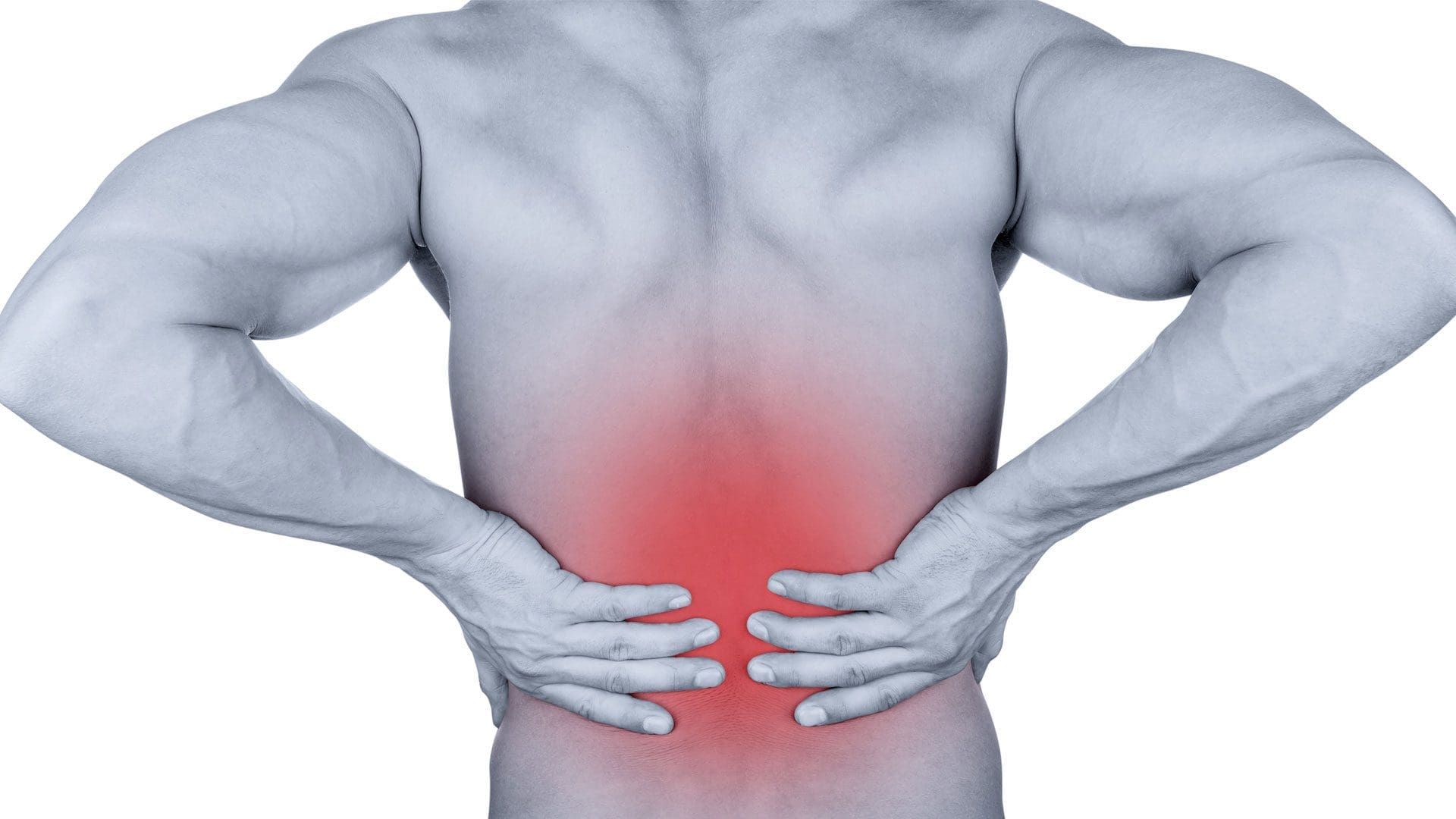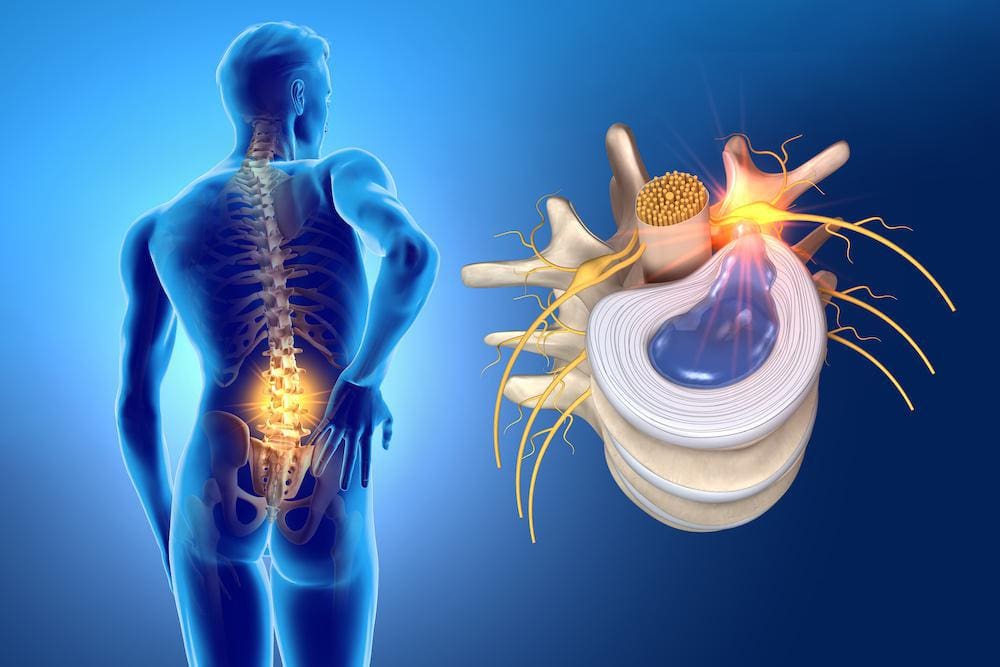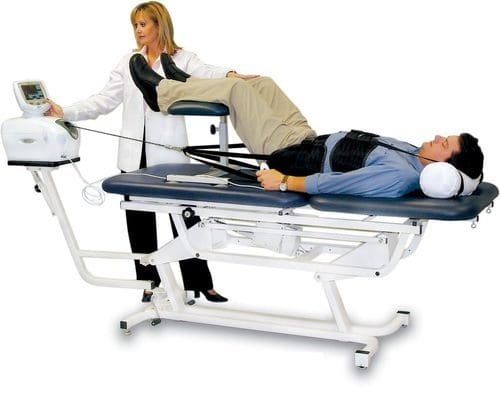
Table of Contents
Introduction
The spine is encompassed by ligaments, soft tissues, joints, and the spinal cord, where it is protected. The spine also holds the body together by ensuring that the musculoskeletal system keeps the body upright and that it can twist, turn, bend, and move around when it is in motion. When the body sustains an injury from an accident or pulls a muscle, it can significantly affect the spine, causing immense pain to the lower back. When this happens, many treatments can help lower back pain by dampening the inflammation and causing relief to the individual. In this article, we will be looking at what is a herniated disc and its symptoms, as well as how decompression can help repair herniated disc in the spine. By referring patients to qualified and skilled providers specializing in spinal decompression therapy. To that end, and when appropriate, we advise our patients to refer to our associated medical providers based on their examination. We find that education is the key to asking valuable questions to our providers. Dr. Alex Jimenez DC provides this information as an educational service only. Disclaimer
Â
Can my insurance cover it? Yes, it may. If you are uncertain, here is the link to all the insurance providers we cover. If you have any questions, please call Dr. Jimenez at 915-850-0900.
What Is Herniated Disc?
Since mainly everyone has dealt with chronic back pain from an injury or pulling a back muscle at some point in their lives, this will cause many individuals to miss work and get treatment from their primary physicians as the pain is excruciating and can cause many people to miss out on everyday activities. Research studies have shown that lower back pain is one of the most common problems. With the different diagnoses for low back pain, DDD (degenerative disc disease) and lumbar disc herniation are considered the most common back pain. Research shows that herniated discs are formed when someone is lifting something heavy or twisting motions on the lower back, causing added stress on the spinal disc.
Research studies have stated that herniated disc has been the known cause of neck, back, and leg pain, and it is due to an injury to the spine. Herniated discs are caused because, usually, spinal discs have a soft, gel-like center on the inside and are protected by a firm outer layer between the spinal joints. Within time and age, the firm outer layer becomes weak and will eventually crack, causing the inner soft gel-like center to push through the cracks of the outer layer and press on the nearby spinal nerves. This will cause sharp shooting pain in the sciatic nerve, causing it to go from the buttock down to the foot.
The Symptoms
Since most herniated discs usually occur in the lower back, research studies stated that they could also occur in the neck. Depending on where the herniated disc is located and pressing on a nerve, it will usually affect one side of the body. Some of the symptoms that herniated discs are causing on the neck and lower back include:
- Arm or leg pain
- Shoulder pain
- Numbness or tingling
- Muscle weakness
Other research studies have also found that lumbar disc herniation can be compressed and irritate the lumbar nerve root and the dural sac of the spine and cause sciatica to form. Since lumbar disc herniation is one of the most common diagnoses for degenerative abnormalities of the lumbar spine, there are ways to treat lumbar disc herniation.
How Lumbar Traction Rehydrates Lumbar Disc-Video
The video shows how a decompression machine uses traction to gently stretch the lumbar spine to rehydrate the lumbar disc back to its original state. As part of spinal decompression therapy, the decompression machine uses a traction machine to gently stretch the spine, causing instant relief to the individual suffering from low back pain or even herniated disc. When the spine gets a gentle stretch, the beneficial nutrients will go to the spinal disc, rehydrate them back into the spine, and improve the disc height. If you want to learn more about spinal decompression therapy, this link will explain the benefits of spinal decompression and how it can alleviate low back pain symptoms.
Repairing Herniated Disc With Decompression
With many treatments that can alleviate lumbar disc herniation, one of the non-surgical treatments providing relief to many individuals is spinal decompression therapy. Research studies have found that spinal decompression therapy has been used to help reduce the pressure of lumbar disc herniation and repair it by supplying nutrients and oxygen back to the lumbar disc. This will cause many individuals to feel instant relief as the herniated disc goes back into the spine with the nutrients and oxygen and repair them back to their original state. Other research studies also found that when combined with physical therapy, spinal decompression therapy is highly effective in the reabsorption of herniation and can increase the disc height for many individuals with lumbar disc herniation.
Conclusion
The spine’s primary function is to make sure that the body is upright and can bend, move, twist, and turn without any problems. The spine is encompassed by ligaments, soft tissues, the musculoskeletal system, the spinal cord, and the spinal disc. When a person accidentally pulls a muscle or sustains an injury, it can compress the spinal disc or cause it to develop a herniation and cause the person pain in their lower back. Luckily, treatments like spinal decompression allow gentle stretching on the spine to repair, restore, and rehydrate the spinal disc back to its original state. When this happens, many individuals will begin to feel instant relief and continue their day pain-free.
References
Al Qaraghli, Mustafa I, and Orlando De Jesus. “Lumbar Disc Herniation – Statpearls – NCBI Bookshelf.†StatPearls [Internet]. Treasure Island (FL), StatPearls Publishing, 30 Aug. 2021, www.ncbi.nlm.nih.gov/books/NBK560878/.
Choi, Jioun, et al. “Influences of Spinal Decompression Therapy and General Traction Therapy on the Pain, Disability, and Straight Leg Raising of Patients with Intervertebral Disc Herniation.†Journal of Physical Therapy Science, The Society of Physical Therapy Science, Feb. 2015, www.ncbi.nlm.nih.gov/pmc/articles/PMC4339166.
Demirel, Aynur, et al. “Regression of Lumbar Disc Herniation by Physiotherapy. Does Non-Surgical Spinal Decompression Therapy Make a Difference? Double-Blind Randomized Controlled Trial.†Journal of Back and Musculoskeletal Rehabilitation, U.S. National Library of Medicine, 22 Sept. 2017, pubmed.ncbi.nlm.nih.gov/28505956/.
Härtl, Roger. “Lumbar Herniated Disc: What You Should Know.†Spine, Spine-Health, 6 July 2016, www.spine-health.com/conditions/herniated-disc/lumbar-herniated-disc.
Medical Professionals, Cleveland Clinic. “Herniated Disk: What It Is, Diagnosis, Treatment & Outlook.†Cleveland Clinic, 1 July 2021, my.clevelandclinic.org/health/diseases/12768-herniated-disk.
Staff, Mayo Clinic. “Herniated Disk.†Mayo Clinic, Mayo Foundation for Medical Education and Research, 8 Feb. 2022, www.mayoclinic.org/diseases-conditions/herniated-disk/symptoms-causes/syc-20354095.
Vialle, Luis Roberto, et al. “Lumbar Disc Herniation.†Revista Brasileira De Ortopedia, Elsevier, 16 Nov. 2015, www.ncbi.nlm.nih.gov/pmc/articles/PMC4799068/.
Disclaimer
Disclaimers
Professional Scope of Practice *
The information herein on "How Spinal Decompression Repair Herniated Disc" is not intended to replace a one-on-one relationship with a qualified health care professional or licensed physician and is not medical advice. We encourage you to make healthcare decisions based on your research and partnership with a qualified healthcare professional.
Blog Information & Scope Discussions
Welcome to El Paso's wellness blog, where Dr. Alex Jimenez, DC, FNP-C, a board-certified Family Practice Nurse Practitioner (FNP-C) and Chiropractor (DC), presents insights on how our team is dedicated to holistic healing and personalized care. Our practice aligns with evidence-based treatment protocols inspired by integrative medicine principles, similar to those found on dralexjimenez.com, focusing on restoring health naturally for patients of all ages.
Our areas of chiropractic practice include Wellness & Nutrition, Chronic Pain, Personal Injury, Auto Accident Care, Work Injuries, Back Injury, Low Back Pain, Neck Pain, Migraine Headaches, Sports Injuries, Severe Sciatica, Scoliosis, Complex Herniated Discs, Fibromyalgia, Chronic Pain, Complex Injuries, Stress Management, Functional Medicine Treatments, and in-scope care protocols.
Our information scope is limited to chiropractic, musculoskeletal, physical medicine, wellness, contributing etiological viscerosomatic disturbances within clinical presentations, associated somato-visceral reflex clinical dynamics, subluxation complexes, sensitive health issues, and functional medicine articles, topics, and discussions.
We provide and present clinical collaboration with specialists from various disciplines. Each specialist is governed by their professional scope of practice and their jurisdiction of licensure. We use functional health & wellness protocols to treat and support care for the injuries or disorders of the musculoskeletal system.
Our videos, posts, topics, subjects, and insights cover clinical matters, issues, and topics that relate to and directly or indirectly support our clinical scope of practice.*
Our office has reasonably attempted to provide supportive citations and has identified the relevant research studies or studies supporting our posts. We provide copies of supporting research studies available to regulatory boards and the public upon request.
We understand that we cover matters that require an additional explanation of how they may assist in a particular care plan or treatment protocol; therefore, to discuss the subject matter above further, please feel free to ask Dr. Alex Jimenez, DC, APRN, FNP-BC, or contact us at 915-850-0900.
We are here to help you and your family.
Blessings
Dr. Alex Jimenez DC, MSACP, APRN, FNP-BC*, CCST, IFMCP, CFMP, ATN
email: coach@elpasofunctionalmedicine.com
Licensed as a Doctor of Chiropractic (DC) in Texas & New Mexico*
Texas DC License # TX5807
New Mexico DC License # NM-DC2182
Licensed as a Registered Nurse (RN*) in Texas & Multistate
Texas RN License # 1191402
ANCC FNP-BC: Board Certified Nurse Practitioner*
Compact Status: Multi-State License: Authorized to Practice in 40 States*
Graduate with Honors: ICHS: MSN-FNP (Family Nurse Practitioner Program)
Degree Granted. Master's in Family Practice MSN Diploma (Cum Laude)
Dr. Alex Jimenez, DC, APRN, FNP-BC*, CFMP, IFMCP, ATN, CCST
My Digital Business Card


